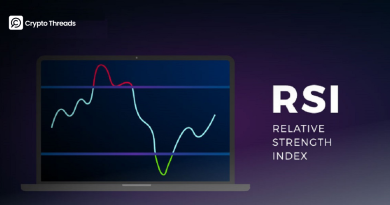Backtesting different DCA strategies in crypto investment
Instead of trying to time the market with long and short positions, buy-and-hold strategies tend to perform better in uptrending markets. However, buy-and-hold investors face higher risks because they are completely exposed to market downturns, and some may be undercapitalized at the start of a trend. To address these challenges, strategies such as Dollar Cost Averaging (DCA) and Value Averaging (VA) offer alternatives. DCA spreads investments over time, reducing the impact of short-term volatility, while VA adjusts contributions dynamically to optimize growth. These methods help investors manage risk and participate in long-term gains without having to time the market perfectly.
Dollar-Cost Averaging (DCA) is an investment strategy where an investor purchases an asset with a fixed amount of money at regular intervals, regardless of its price, therefore the investor gains a larger amount of asset when its price is low and smaller amount when it’s high, averaging out the cost over time.
DCA ignores the market volatility and eliminates the need for market timing, which is challenging even for experienced investors, making it particularly easier for beginners to manage.
In the example below, we assume the investor had $100,000 in January 2018. In the lump sum approach, he uses up the entire amount in BTC at once, while with DCA, he regularly buys the amount of BTC equivalent to $1,200 at the beginning of each month and reserves the remaining cash. Eventually, the lump sum strategy achieves higher profits due to a better entry position, while DCA minimizes risk by reducing maximum drawdowns.

DCA vs Lump Sum investment in BTC
===== Final Investment Report (BTC-USD) =====
Total BTC Held (DCA): 7.441588 BTC
Total BTC Held (Lump Sum): 9.783683 BTC
Final Equity (DCA): $695,261.63
Final Equity (Lump Sum): $914,081.72
Total Money Spent (DCA): $99,600.00
Total Money Spent (Lump Sum): $100,000.00
Max Drawdown (DCA): 66.70%
Max Drawdown (Lump Sum): 73.01%
Calculation on monthly data
While the DCA strategy eliminates the challenge of market timing, traders also miss opportunities to gain more assets during the down trend. To utilize the price dip period, investors have developed a modified DCA approach—buying an asset whenever its price drops by a set amount, either in absolute terms or by a percentage. Similar to the conventional DCA, step-based DCA strategy also assumes the asset will eventually rise and that downturns are temporary, allowing investors to capitalize on price dips and maximize gains in volatile markets.
In the example below, the investor invests $10,000 each time BTC drops by 10% or more, continuing until the full $100,000 budget is spent. By the end of the period, both the total BTC held and overall equity exceed the lump sum approach. The maximum drawdown is exactly the same, as the investment funds were fully deployed before BTC peaked in 2021.

===== Final Investment Report (BTC-USD) =====
BTC Held (Threshold DCA, 10.0% drop): 14.464172 BTC
BTC Held (Lump Sum): 10.904483 BTC
Final Equity (Threshold DCA): $1,395,055.70
Final Equity (Lump Sum): $1,051,727.10
Total Money Spent (Threshold DCA): $100,000.00
Total Money Spent (Lump Sum): $100,000.00
Max Drawdown (Threshold DCA, 10% drop): 76.63%
Max Drawdown (Lump Sum): 76.63%
Threshold DCA Budget Exhausted On: 2020-09-03
Calculation on daily data
While DCA invests a fixed amount at regular intervals or opportunities, Value Averaging adjusts contributions to maintain a steady growth target, either in absolute terms of percentage. At each interval, the investor recalculates his asset value to check if it reaches his growth target and make a decision to buy more assets or to hold, or even to sell the asset and rebalance his portfolio.
For example, instead of investing $1,000 monthly or waiting for the dips, a Value Averaging investor aims to increase their asset value by $1,000, or by 5% each month. This means investing more when prices drop and less when they rise, ensuring the total asset value to reach the target amount at each milestone. The growth target can dynamically be changed according to the market conditions or the asset volatility.

Compare DCA and Value Averaging in the stock market. Source: Investopedia
Value Averaging (VA) is particularly effective in volatile markets, allowing investors to capitalize on price dips during downtrends and avoid overpaying in strong uptrends. As a result, over the long run, VA tends to outperform DCA in terms of overall asset value.
In the example below, the investor began with $20,000 at the start of 2018, aiming for a $3000 monthly growth rate with a total budget of $100,000. Due to the hyper growth of BTC, the target becomes outdated and the budget is never used up. The final equity far exceeds the DCA methods with the approximately equivalent max drawdown.

===== Final Investment Report =====
BTC Held: 17.062908 BTC
Final Equity: $1,645,701.37
Total Money Spent: $97,183.20
Max Drawdown: -73.01%
Calculation on monthly data
Please note that the backtesting results above can significantly change even if the investors slightly changed the inputs like target growth rate, the investment amount each month and so on.
However, by the demonstration of how an investor can spend $100,000 on BTC during the period from 2018 to 2024, we can see how these strategies can be useful to investors. Traditional DCA at each interval can minimize risk, while step-based DCA and Value Averaging can optimize the entry while reducing risk exposure as well offering better capital preservation.
On the other hand, it’s important to note that all these strategies root from the traditional financial market, and rely on the assumption that the asset’s value will rise in the long term. To apply them into the crypto market, investors need to conduct strict market research and consider fundamental factors which ensure the long term growth of currency.



